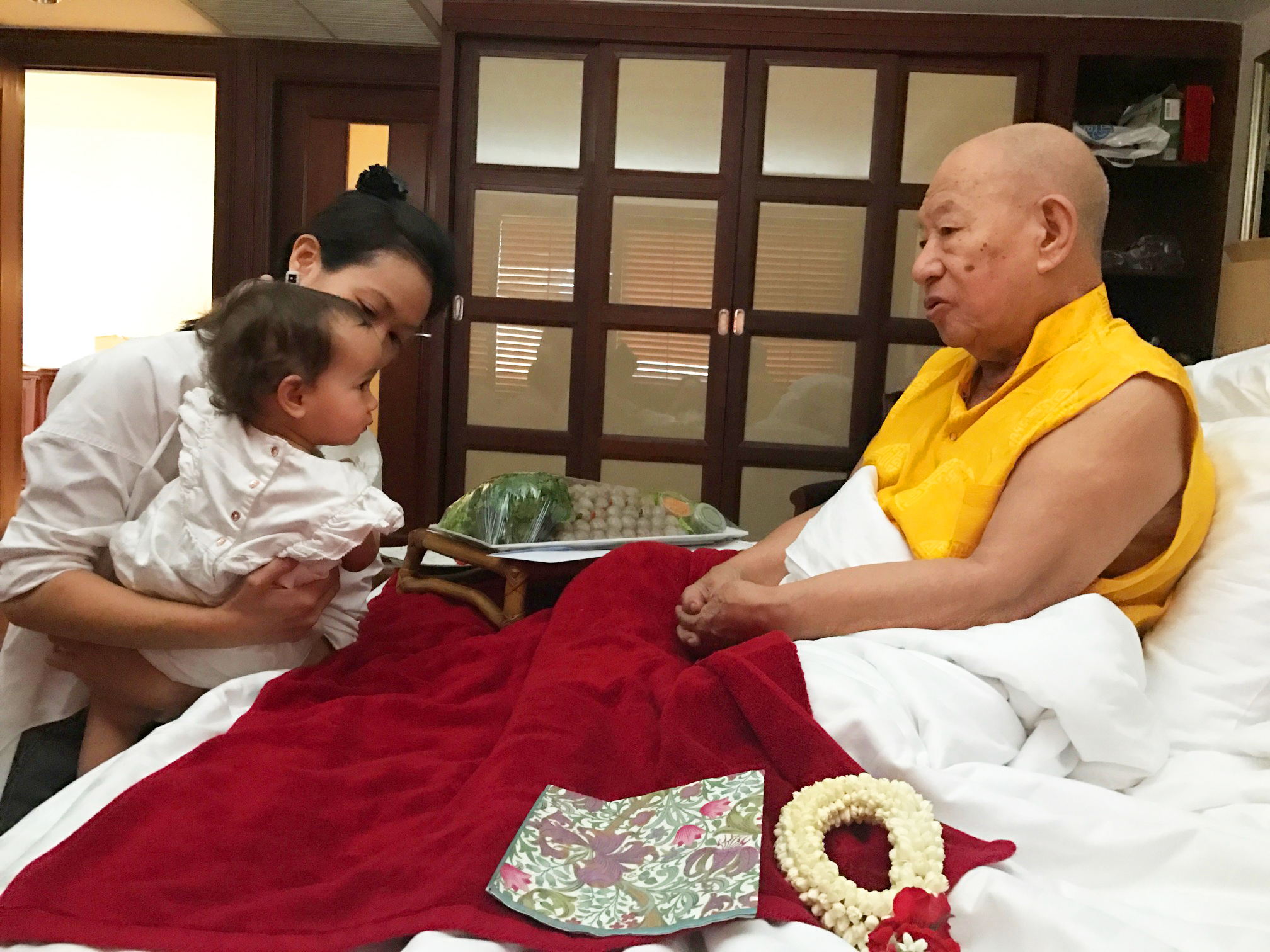
The fourth in a succession of masters whose name means "great siddha from the region of Do", he was a guide to countless other great lamas. He founded a center in western Massachusetts, the Maha Siddha Nyingmapa Center.
Adam Pearcey is a full-time translator of Tibetan Buddhist texts. He is the founder of Lotsawa House, an online library featuring several hundred translations, and was formerly director of the Rigpa Shedra. His previous publications include (as cotranslator) Mind in Comfort and Ease by His Holiness the Dalai Lama and Ga Rabjampa’s To Dispel the Misery of the World, a work on mind training translated at the suggestion of the late Khenchen Appey Rinpoche.
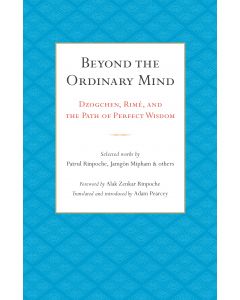
Translated by Adam Pearcey
By Patrul Rinpoche
By Jamgon Mipham
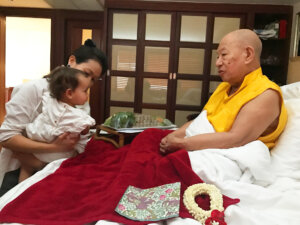
The Great Fourth Dodrubchen Rinpoche

The fourth in a succession of masters whose name means "great siddha from the region of Do", he was a guide to countless other great lamas. He founded a center in western Massachusetts, the Maha Siddha Nyingmapa Center.
See Also: Some Nyingma Lineages: Dudjom Tersar | Longchen Nyingtig | Namcho & Palyul
Some Important Nyingma Figures: Rongzompa | Longchenpa | Jigme Lingpa | Patrul Rinpoche | Mipham Rinpoche
Dudjom Rinpoche | Dilgo Khyentse Rinpoche| Tulku Thondup
Rare video footage of Dodrubchen Rinpoche in Sikkim and the US, with Thinley Norbu Rinpoche and others.
The line of Dodrubchens consists of:
*Note, there were two Fourths
This magisterial work covers the entire Longchen Nyingtik tradition stemming from Jigme Lingpa, including the whole Dodrubchen line given that Jigme Lingpa's main disciple was the first Dodrubchen Rinpoche.
Please enjoy the full chapter on we are offering here in appreciation of his immeasurable activity.
Click to expand and read full-screen.
Tulku Thondup's short work on the tulku tradition includes many stories of his teacher, Dodrubchen Rinpoche.
The Complete Nyingma Tradition from Sutra to Tantra, Books 1 to 10
$49.95 - Hardcover
This and the other volumes in the Complete Nyingma Tradition were written by Choying Tobden Dorje, a close disciple of the First Dodrubchen, Jigmé Trinlé Özer who referred to the author as "this northern black mantra adept, like a meteorite dagger, is the designated inheritor of an ocean of wrathful mantras."
Jamyang Khyentse Chokyi Lordro was deeply connected with both the Third and Fourth Dodrubchen masters and stories of them both appear throughout.
$27.95 - Paperback
By: Matthieu Ricard & Shabkar Tsogdruk Rangdrol & Constance Wilkinson
The Third Dodrubchen Rinpoche appears in many of the stories of Patrul Rinpoche.
Most lamas from the Nyingma tradition have a strong connection with Dodrubchen Rinpoche. Here are a few who are also our authors.
Dzongsar Khyentse, describing Dodrubchen Rinpoche: "Probably the last genuine non hypocritical, fearless man on earth. He must live long. His mere presence on this earth is proof that there is not only path mahasandhi but also a person mahasandhi. I will dedicate all my merit, if there is any, and dedicate it to his long life."
Tulku Thondup is a close disciple of Dodrubchen Rinpoche and has written extensively about him and the Longchen Nyingtik lineage.
Rabjam Rinpoche, describing Dodrubchen Rinpoche: "Dodrupchen Rinpoche was the last of a generation of great Dzogchen practitioners and the principal holder of the Longchen Nyingtik lineage. He was a compelling and compassionate teacher, extremely humble and unassuming.
Anyen Rinpoche was raised in Tibet and has a strong connection with Dodrubchen Rinpoche.
Dzigar Kongtul Rinpoche on Dodrupchen Rinpoche: "He touched countless lives. Simply seeing him, and especially receiving teachings from him, has brought many onto the Dzogchen path and assured their liberation through the power of his blessings. The loss of him from this world brings us all a heavy heart, but we pray that another nirmanakaya will swiftly return as the fifth Dodrup Rinpoche to carry on the Great Perfection Nyingtik lineage and thus bring immense benefit."
Kilung Rinpoche is was recognized as a tulku by Dodrubchen Rinpoche who came and consecrated his center in Washington state.
This is only a small sample as the Dodrubchen tradition appears in a large amount of our list.
A staff favorite, this includes the Third Dodrubchen, Jigme Tenpe Nyima's
The Complete Nyingma Tradition from Sutra to Tantra, Books 1 to 10
$49.95 - Hardcover
This and the other volumes in the Complete Nyingma Tradition were written by Choying Tobden Dorje, a close disciple of the First Dodrubchen, Jigmé Trinlé Özer who referred to the author as "this northern black mantra adept, like a meteorite dagger, is the designated inheritor of an ocean of wrathful mantras."
Jamyang Khyentse Chokyi Lordro was deeply connected with both the Third and Fourth Dodrubchen masters and stories of them both appear throughout.
$27.95 - Paperback
By: Matthieu Ricard & Shabkar Tsogdruk Rangdrol & Constance Wilkinson
The Third Dodrubchen Rinpoche appears in many of the stories of Patrul Rinpoche.
This incredible book by Tulku Thondup includes translations of many instructions by the Third Dodrubchen as well as one by the First Dodrubchen.
Ringu Tulku relates a bit about the Dodrubchen line, as well as a story about the Third Dodrubchen Rinpoche being concerned about the teaching of Dzogchen and how easy misunderstandings can arise.
$39.95 - Paperback
By: Gyurme Avertin & Khenpo Chemchok & Jigme Lingpa & Patrul Rinpoche & Khangsar Tenpa'i Wangchuk
Various Dodrubchens appear throughout the writing in this collection, all about the main Rigdzin Dupa, the main Lama practice of the Longchen Nyingtik.
$21.95 - Paperback
By: H.H. the Fourteenth Dalai Lama & Richard Barron (Chokyi Nyima) & Patrick Gaffney & Thupten Jinpa
The Third Dodrubchen Rinpoche appears in much of this book by His Holiness the Dalai Lama.
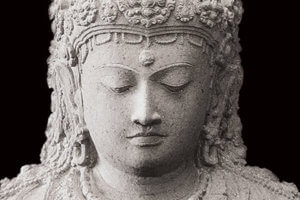
The Six Paramitas: A Reader's Guide

The six paramitas, or transcendent perfections, are an essential concept in the practice of Mahayana Buddhism. They are so fundamental in fact that the “Vehicle of the Perfections” is a synonym for Mahayana itself. The Pali or Theravada tradition also includes perfections, referred to as paramis, but a discussion of these is out of the scope of this article.
In The Essence of Buddhism, Traleg Rinpoche includes two chapters on the paramitas and introduces them stating:
“If we want to obtain enlightenment by becoming a Bodhisattva, it is necessary to actualize wisdom and compassion. This is done by the practice of what are called the six paramitas, or 'transcendental actions.'
Para in Sanskrit literally means the 'other shore.' Here it means going beyond our own notion of the self. From the Buddhist point of view in general, and from the Mahayana point of view in particular, if we want to progress properly on the path, we need to go beyond our conventional understanding of the self. So when we say that paramita means 'transcendental action,' we mean it in the sense that actions or attitudes are performed in a non-egocentric manner. 'Transcendental' does not refer to some external reality, but rather to the way in which we conduct our lives and perceive the world—either in an egocentric or a non-egocentric way. The six paramitas are concerned with the effort to step out of the egocentric mentality.”
The six are generally translated as generosity, discipline, patience, diligence, meditative concentration, and wisdom. Some lists enumerate ten paramitas, the last four of which are aspects of the wisdom paramita and are skillful means, strength, aspiration, and primordial wisdom. These align with the ten stages of the bodhisattva path.
But for this Reader’s Guide, we will be focusing on what we think are some of the outstanding presentations of the six.
The earliest source texts for the paramitas come from the Buddha himself in the form of the Prajnaparamita Sutras, such as the Prajnaparamita Sutra in 10,000 lines available from 84000. But they have resonated throughout Indian, East Asian, and Tibetan literature ever since where readers may find the presentations more clear and concise.
Perhaps the most concise work on the Six Perfections is Geshe Sonam Rinchen’s The Six Perfections. This short work consists of six chapters explaining each paramita, weaving in stories from the time of the Buddha, Indian thinkers such as Nāgārjuna and Chandrakīrti, and Kadampa masters from Tibet.
The Six Perfections: An Oral Teaching
By Geshe Sonam Rinchen
Edited and translated by Ruth Sonam
The Six Perfections of generosity, ethical discipline, patience, enthusiastic effort, concentration, and wisdom are practiced by Bodhisattvas who have the supreme intention of attaining enlightenment for the sake of others. These six are perfections because they give rise to complete enlightenment. Practice of them also insures the attainment of an excellent body and mind in the future and even more favorable conditions for effective practice than those we enjoy at present. Generosity leads to the enjoyment of ample resources, ethical discipline gives a good rebirth, patience leads to an attractive appearance and supportive companions, enthusiastic effort endows the ability to complete what is undertaken, fostering concentration makes the mind invulnerable to distraction, and wisdom discriminates between what needs to be cultivated and what must be discarded and leads to greater wisdom in the future.
$21.95 - Paperback
In Kindness, Clarity, and Insight, His Holiness the Dalai Lama includes a chapter called“Altruism and the Six Perfections," where he explains how altruism, characterized by the longing to help others, relates to the perfections. He explains that when
“altruism is transformed into action, you engage in practicing the six perfections: giving, ethics, patience, effort, concentration, and wisdom. There are three types of giving—the giving of resources, of one’s own body, and of roots of virtue. It is the most difficult to give away your own roots of virtue, and it is also the most important. When you have a strong sense of giving and dedicating to others your roots of virtue, you no longer seek for any reward for yourself. Even though mere giving can be done by those seeking their own benefit, a Bodhisattva’s giving is not involved in selfishness at all.”
$16.95 - Paperback
Kindness, Clarity, and Insight: The Fundamentals of Buddhist Thought and Practice
This beloved classic brings together in one volume all the major themes of the Dalai Lama’s teachings. Drawn from the lectures he gave during his first three visits to North America, the book covers the core subject matter of Tibetan Buddhism, as presented for the first time to an English-speaking audience. The chapters are arranged developmentally from simple to complex topics, which include the luminous nature of the mind, the four noble truths, karma, the common goals of the world’s religions, meditation, deities, and selflessness. Central to all these teachings is the necessity of compassion, which the Dalai Lama declares is “the essence of religion” and “the most precious thing there is.”
As quoted above, Traleg Rinpoche has two chapters devoted to the paramitas in The Essence of Buddhism. The first chapter covers the first four as they relate to physical actions and are in the domain of morality. The second chapter focuses on the paramitas most directly related with the mind, meditation, and wisdom.
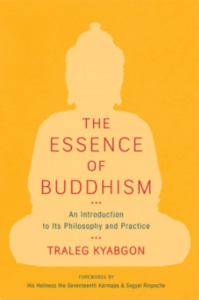
$19.95 - Paperback
The Essence of Buddhism: An Introduction to Its Philosophy and Practice
By Traleg Kyabgon
Foreword by Sogyal Rinpoche
Foreword by H.H. the Seventeenth Karmapa, Ogyen Trinley Dorje
This comprehensive guide to the Buddhist path from the Tibetan point of view is as accessible as it is complete. Traleg Kyabgon breaks the teachings down conveniently into the three traditional “vehicles,” while never letting us forget that the point of all the Dharma is nothing other than insight into the mind and heart. Along the way he provides vivid definitions of fundamental Buddhist concepts such as compassion, emptiness, and Buddha-nature and answers common questions such as:
Mipham Rinpoche also includes a chapter on the paramitas in his Just King: The Tibetan Buddhist Classic on Leading an Ethical Life, a work that while on the face is a letter to the King of Derge in eastern Tibet in the late 1800s, is in fact meant to be a work for everyone to study as an almost secular code of conduct and to put into practice for living a meaningful life. It is still studied by thousands of lay and monastic Tibetans and Chinese in places like Larung Gar, the largest Buddhist community in the world.
$24.95 - Paperback
The Just King: The Tibetan Buddhist Classic on Leading an Ethical Life
Translated by Jose Cabezon
By Jamgon Mipham
Leadership. Power. Responsibility. From Sun Tzu to Plato to Machiavelli, sages east and west have advised kings and rulers on how to lead. Their motivations and techniques have varied, but one thing they have in common is that the relevance of their advice has reached far beyond the few individuals to whom they were originally addressing. Over the centuries, millions have read their works and continue to be inspired by their teachings.
The nineteenth-century Buddhist monk and luminary Jamgön Mipham’s letter to the king of Dergé, whose small kingdom straddled China and Tibet during a particularly turbulent period, is similar in the universality of its message. This work, however, is unique in that it stresses compassion, impartiality, self-control, and virtue as essential for long-lasting success—whether as a leader or an individual trying to live a meaningful life. Mipham’s historic contribution to ethics and governance, until now little studied outside of Buddhist circles, teaches us the importance of protecting life, implementing fair taxation, supporting environmental sustainability, aiding the poor, and safeguarding freedom of religion. Both present-day leaders and those they lead will find this classic work, finally available in English, profoundly illuminating on political, societal, and personal levels.
Chogyam Trunga Rinpoche, the teacher of Pema Chödrön among many others, presents the paramitas in several works but perhaps most completely in The Bodhisattva Path of Wisdom and Compassion.
Here is an excerpt from this book that quite eloquently shows the relationships between the paramitas:
"The technique for becoming a good practitioner, a decent person, a good warrior, and a good bodhisattva is to follow the six transcendent disciplines. With generosity you open yourself and give away everything, including yourself.
Out of that naturally grows transcendent discipline. With discipline, you do not get tied up in your generosity. You don’t have any hangover from giving away too much, and you don’t develop any heroism from giving so much away.
Out of discipline comes patience. You control your aggression by means of shamatha and vipashyana and by means of realizing absolute and relative bodhichitta. You develop nonaggression.
Out of patience grows exertion, which is having a sense of joy in, and appreciation of, your livelihood and your practice.
After exertion comes meditation. Meditation does not mean purely sitting on your meditation cushion, or gomden. Meditation means that the cushion is sewn to your pants, so your gomden goes with you everywhere. Instead of wearing a crucifix, you might sew a gomden onto your skirt or your pants, so that you always have an awareness of meditation. It’s as literal as that.
From the paramita of meditation, an extraordinary intelligence begins to open up, known as prajna paramita. From the extraordinary intelligence of prajna, you develop an understanding of mindfulness and awareness, as well as an understanding of all five previous paramitas. Prajna is also like the horse that pulls the chariot, or the rest of the paramitas. Prajna knows where to go and how to go. Therefore, prajna is a very important part of bodhisattva discipline: everything begins to spark. It has also been said in the texts that all rivers go to the south and that all rivers flow into the ocean. That ocean is prajna."
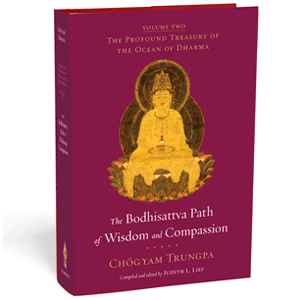
$39.95 - Paperback
Bodhisattva Path of Wisdom and Compassion (Volume 2) The Profound Treasury of the Ocean of Dharma
By Chogyam Trungpa
Edited by Judith L. Lief
This comprehensive guide to the body of Buddhist teachings known as the mahayana brings together theory and practice in a way that reveals contemplative experience to be inseparable from the traditional concepts used to describe it. Based on teachings from the Vajradhatu Seminaries—the three-month-long meditation-and-study retreats that Chögyam Trungpa Rinpoche led annually from 1973 to 1986—it covers in detail topics such as shunyata (emptiness), bodhichitta (the heart and mind of enlightenment), the bodhisattva ideal, and more. The Bodhisattva Path of Wisdom and Compassion, along with its two companion volumes, presents a complete map of the Tibetan Buddhist path from beginning to middle to end, from a teacher who had an extraordinary ability to convey the buddhadharma to the hearts and minds of his students.
Shantideva’s classic text, The Way of the Bodhisattva is in essence an exploration of how to put the paramitas into practice. In addition to translations by The Padmakara Translation Group and Alan Wallace, there are several very accessible commentaries by Pema Chödrön and the Dalai Lama as well as a highly detailed commentary from Khenpo Kunpel (aka Kunzang Pelden) called The Nectar of Manjushri's Speech.
For a full list of the translations and commentaries on the Way of the Bodhisattva see our Reader’s Guide to the Way of the Bodhisattva.
By Shantideva
Translated by Padmakara Translation Group
Foreword by H.H. the Fourteenth Dalai Lama
Treasured by Buddhists of all traditions, The Way of the Bodhisattva (Bodhicharyavatara) is a guide to cultivating the mind of enlightenment, and to generating the qualities of love, compassion, generosity, and patience. This text has been studied, practiced, and expounded upon in an unbroken tradition for centuries, first in India, and later in Tibet. Presented in the form of a personal meditation in verse, it outlines the path of the Bodhisattvas—those who renounce the peace of individual enlightenment and vow to work for the liberation of all beings and to attain buddhahood for their sake.
This version, translated from the Tibetan, is a revision by the translators of the 1997 edition. Included are a foreword by His Holiness the Dalai Lama, a new translator's preface, a thorough introduction, a note on the translation, and three appendices of commentary by the Nyingma master Kunzang Pelden.
A Guide to the Bodhisattva Way of Life
By Shantideva
Translated by Vesna A. Wallace
Translated by B. Alan Wallace
In the whole of the Tibetan Buddhist tradition, there is no single treatise more deeply revered or widely practiced than A Guide to the Bodhisattva Way of Life. Composed in the eighth century by the Indian Bodhisattva Santideva, it became an instant classic in the curricula of the Buddhist monastic universities of India, and its renown has grown ever since. Santideva presents methods to harmonize one's life with the Bodhisattva ideal and inspires the reader to cultivate the perfections of the Bodhisattva: generosity, ethics, patience, zeal, meditative concentration, and wisdom.
Entering the Way of the Bodhisattva: A New Translation and Contemporary Guide
Translated by Khenpo David Karma Choephel
By Shantideva
For well over a millennium, Shantideva’s guide to the bodhisattva’s path has been revered and studied as a manual for becoming a bodhisattva, someone who is dedicated to achieving enlightenment in order to benefit all beings. In this fresh and poetic translation, Khenpo David Karma Choephel communicates the power of Shantideva’s insights through careful attention to both the meaning and the rhythmic pulse of each stanza. The translation is followed by a chapter-by-chapter guide, which provides necessary context and practical advice.
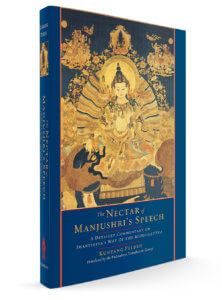
Nectar of Manjushri's Speech: A Detailed Commentary on Shantideva's Way of the Bodhisattva
By Kunzang Pelden
Translated by Padmakara Translation Group
The Bodhicharyavatara, or Way of the Bodhisattva, composed by the eighth-century Indian master Shantideva, has occupied an important place in the Tibetan Buddhist tradition throughout its history. It is a guide to cultivating the mind of enlightenment through generating the qualities of love, compassion, generosity, and patience. In this commentary, Kunzang Pelden has compiled the pith instructions of his teacher Patrul Rinpoche, the celebrated author of The Words of My Perfect Teacher.
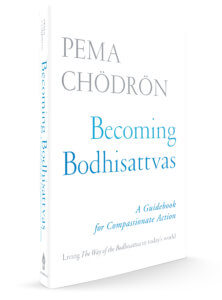
Becoming Bodhisattvas: A Guidebook for Compassionate Action
By Pema Chodron
The Way of the Bodhisattva has long been treasured as an indispensable guide to enlightened living, offering a window into the greatest potential within us all. Written in the eighth century by the scholar and saint Shantideva, it presents a comprehensive view of the Mahayana Buddhist tradition’s highest ideal—to commit oneself to the life of a bodhisattva warrior, a person who is wholeheartedly dedicated to the freedom and common good of all beings. And it has inspired many of the tradition’s greatest teachers, providing a remarkable source of insight on the means by which we may heal ourselves and our troubled world. These essential teachings present the core of the Buddhist path, from cultivating deep-seated confidence to infusing one’s life with selflessness, joyfulness, kindness, and compassion. Pema Chödrön here invites you to journey more deeply into this liberating way of life, presenting Shantideva’s text verse-by-verse and offering both illuminating stories and practical exercises to enrich the text and bring its timeless teachings to life in our world today.
(Previously published under the title No Time to Lose.)
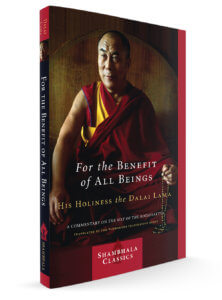
For the Benefit of All Beings: A Commentary on The Way of the Bodhisattva
Read by Wulstan Fletcher
Translated by Padmakara Translation Group
By H.H. the Fourteenth Dalai Lama
The fourteenth Dalai Lama, a living embodiment of the bodhisattva ideal, presents here detailed practical guidance based on sections of The Way of the Bodhisattva by Shantideva, the best-known text of Mahayana Buddhism. The Dalai Lama explains this classic and beloved work, showing how anyone can develop a truly "good heart" and the aspiration for the enlightenment of all beings. In this book, the Dalai Lama's profound knowledge is evident—the result of extensive training. Here he shares his extraordinary insight into the human condition and what it means to be a responsible and caring person. This book was previously published under the title A Flash of Lightning in the Dark of Night.
Of the classic texts on The Way of a Bodhisattva that focus on specific chapters, Mipham Rinpoche's The Wisdom Chapter is one of the more well known. Below Padmakara translator Wulstan Fletcher discusses the context for Mipham Rinpoche's commentary on the ninth, or Wisdom Chapter.
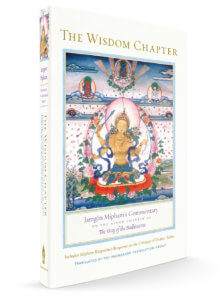
The Wisdom Chapter: Jamgön Mipham's Commentary on the Ninth Chapter of The Way of the Bodhisattva
Shāntideva’s guide to the training of a Bodhisattva is one of the most important and beloved texts in the Tibetan tradition. The ninth chapter, however, dealing with Madhyamaka, the Middle Way, the most profound wisdom view of Mahayana Buddhism, has always posed unique challenges to readers. This commentary by the great scholar Mipham Rinpoche presents in quite straightforward terms Shantideva’s exposition of emptiness, the essential foundation of all Buddhist doctrine, demonstrating that it is not only compatible with, but in fact crucial to, the correct understanding of other important Buddhist teachings such as karma, rebirth, and the practice of compassion. Mipham interprets Shāntideva according to the view of the Nyingma school, which in some respects was at variance with the religiously and politically dominant interpretation of the text in Tibet at that time. As a result, his commentary stirred up a furious debate. With the addition of a critique of Mipham Rinpoche’s view by a prominent scholar of the time, along with Mipham’s response, that debate is beautifully captured in this volume.
There are also several works unpacking specific chapters from the work on the paramitas including the Dalai Lama's Perfecting Patience, and Perfecting Wisdom, Dzigar Kongtrul Rinpoche's The Peaceful Heart, Mipham Rinpoche's The Wisdom Chapter and more.
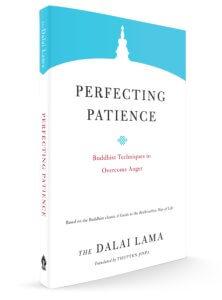
Perfecting Patience: Buddhist Techniques to Overcome Anger
By H.H. the Fourteenth Dalai Lama
Translated by Thupten Jinpa
All of the world’s major religions emphasize the importance of love, compassion, and tolerance. This is particularly true in the Buddhist traditions, which unanimously state that compassion and love are the foundation of all paths of practice. To cultivate the potential for compassion and love inherent within us, it is crucial to counteract their opposing forces of anger and hatred. In Perfecting Patience, the Dalai Lama shows how, through the practice of patience and tolerance, we can overcome the obstacles of anger and hatred. He bases his discussion on A Guide to the Bodhisattva Way of Life, the classic work on the activities of bodhisattvas—those who aspire to attain full enlightenment in order to benefit all beings.
This book was previously published under the title Healing Anger.
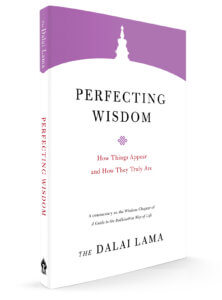
Perfecting Wisdom: How Things Appear and How They Truly Are
By H.H. the Fourteenth Dalai Lama
This extraordinarily clear exposition on the wisdom section of A Guide to the Bodhisattva Way of Life is based on an oral teaching given in Switzerland by H.H. the Dalai Lama before an audience of thousands of Tibetans and Westerners in 1979. Shantideva’s A Guide to the Bodhisattva Way of Life is one of the most important texts in the Mahayana tradition of Buddhist practice. Its ninth chapter, the section on transcendent wisdom, is known among Buddhist scholars as a challenging exposition of Madhyamika philosophy and difficult to understand without a commentary. This invaluable volume with its precise elucidation of the core issues of Tibetan Buddhism stands as a key work in Buddhist literature.
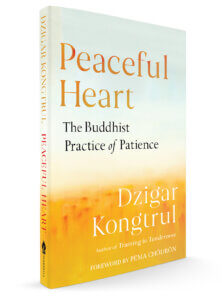
The Peaceful Heart: The Buddhist Practice of Patience
By Dzigar Kongtrul
Contributions by Pema Chodron
Edited by Joseph Waxman
An introductory guide to cultivating patience and opening your heart to difficult circumstances from leading Buddhist teacher, Dzigar Kongtrul Rinpoche.
In the Buddhist tradition, “patience” is our mind’s ability to work positively with anything that bothers us—a vast spectrum of particulars that all boil down to not getting what we want or getting what we don’t want. In fluid, accessible language, Dzigar Kongtrul expands on teachings by the ancient sage Shantideva that contain numerous powerful and surprising methods for preventing our minds from becoming consumed by what bothers us—especially in anger. The result of practicing patience is a state of mind where we can feel at home in every situation and be fully available to love and care for others. Patience is the lifeblood of a peaceful heart.
We have a host of books from the Chan/Zen/Soen traditions that focus on the paramitas.
The Sutra of Hui-Neng translated by Thomas Cleary includes his commentary on the Diamond Sutra which discusses the paramitas as a group. Wong Mou-lam and A.F Price translation, The Diamond Sutra and the Sutra of Hui-Neng is also a great resource.
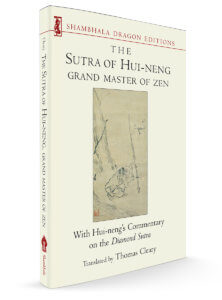
The Sutra of Hui-neng, Grand Master of Zen: With Hui-neng's Commentary on the Diamond Sutra
Translated by Thomas Cleary
Hui-neng (638–713) is perhaps the most beloved and respected figure in Zen Buddhism. An illiterate woodcutter who attained enlightenment in a flash, he became the Sixth Patriarch of Chinese Zen, and is regarded as the founder of the "Sudden Enlightenment" school. He is the supreme exemplar of the fact that neither education nor social background has any bearing on the attainment of enlightenment. This collection of his talks, also known as the Platform or Altar Sutra, is the only Zen record of its kind to be generally honored with the appellation sutra, or scripture.
The Sutra of Hui-neng is here accompanied by Hui-neng's verse-by-verse commentary on the Diamond Sutra—in its very first published English translation ever.
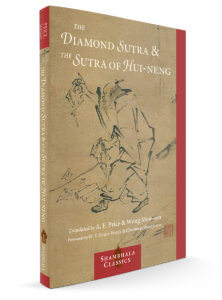
The Diamond Sutra and The Sutra of Hui-neng
Translated by Wong Mou-lam
Translated by A. F. Price
Foreword by W. Y. Evans-Wentz
Foreword by Christmas Humphreys
The Diamond Sutra, composed in India in the fourth century CE, is one of the most treasured works of Buddhist literature and is the oldest existing printed book in the world. It is known as the Diamond Sutra because its teachings are said to be like diamonds that cut away all dualistic thought, releasing one from the attachment to objects and bringing one to the further shore of enlightenment. The format of this important sutra is presented as a conversation between the Buddha and one of his disciples. The Sutra of Hui-neng, also known as the Platform Sutra, contains the autobiography of a pivotal figure in Zen history and some of the most profound passages of Zen literature. Hui-neng (638–713) was the sixth patriarch of Zen in China, but is often regarded as the true father of the Zen tradition. He was a poor, illiterate woodcutter who is said to have attained enlightenment upon hearing a recitation of the Diamond Sutra. Together, these two scriptures present the central teaching of the Zen Buddhist tradition and are essential reading for all students of Buddhism.
Both of the above books are included in our Reader's Guide on The Works of the Chan and Zen Patriarchs where you will find other important Zen classics.
Some more contemporary examples include:
The Compass of Zen by Korean Zen Master Seung Sahn includes a chapter on the paramitas which includes a wonderful story from the 16th century of a Korean monk being harassed by invading soldiers that illustrates the fifth paramita, meditative concentration.
Diane Rizzetto’s Deep Hope: Zen Guidance for Staying Steadfast When the World Seems Hopeless is a higly accessible study of the paramitas. She says:
“A common metaphor is the crossing of a river, such that to practice the paramitas is to cross over from the shore of what my teacher called “the cocoon of self-absorption” to another shore, where we realize that our own well-being and the well-being of others, all beings, and even the planet are interconnected in a vast web of love, joy, pain, and sorrow. I think of the paramitas as fundamental functions of human life that enable us to make wise and compassionate responses in a world filled with suffering.”
In The World Could Be Otherwise: Imagination and the Bodhisattva Path, Zen teacher Norman Fischer writes that the paramitas can help us reconfigure the world we live in. Ranging from our everyday concerns about relationships, ethics, and consumption to our artistic inspirations and broadest human yearnings, Fischer depicts imaginative spiritual practice as a necessary resource for our troubled times.
Reb Anderson’s late 2019 release, Entering the Mind of Buddha: Zen and the Six Heroic Practices of Bodhisattvas is a wonderful and extremely clear presentation of the paramitas.
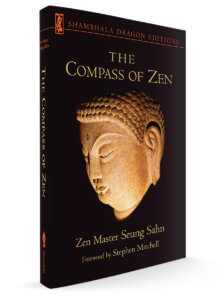
Foreword by Stephen Mitchell
By Zen Master Seung Sahn
Edited by Hyon Gak
The Compass of Zen is a simple, exhaustive—and often hilarious—presentation of the essence of Zen by a modern Zen Master of considerable renown. In his many years of teaching throughout the world, the Korean-born Zen Master Seung Sahn has become known for his ability to cut to the heart of Buddhist teaching in a way that is strikingly clear, yet free of esoteric and academic language. In this book, based largely on his talks, he presents the basic teachings of Buddhism and Zen in a way that is wonderfully accessible for beginners—yet so rich with stories, insights, and personal experiences that long-time meditation students will also find it a source of inspiration and a resource for study.
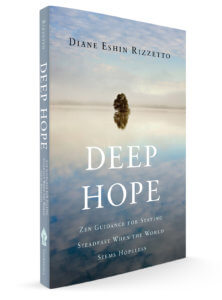
Deep Hope: Zen Guidance for Staying Steadfast When the World Seems Hopeless
Amidst the barrage of the daily news cycle and the tumult of our personal lives, it may seem natural to contract out of fear or anxiety. But is there a way to face our lives and the world without closing off our hearts? There is such a path, says Zen teacher Diane Rizzetto. It can be reached through the teachings of the Buddhist paramitas or “perfections”—giving and receiving, taking skillful action, practicing patience, engaging effort, meditating, and seeing clearly. Filled with stories, teachings, student questions, and practices, Deep Hope demonstrates the possibility of living with a hopefulness that is grounded in the present moment—a practice of spiritual nourishment and deepening wisdom.
The World Could Be Otherwise: Imagination and the Bodhisattva Path
In frightening times, we wish the world could be otherwise. With a touch of imagination, it can be. Imagination helps us see what’s hidden, and it shape-shifts reality’s roiling, twisting waves. In this inspiring reframe of a classic Buddhist teaching, Zen teacher Norman Fischer writes that the paramitas, or “six perfections”—generosity, ethical conduct, patience, joyful effort, meditation, and understanding—can help us reconfigure the world we live in. Ranging from our everyday concerns about relationships, ethics, and consumption to our artistic inspirations and broadest human yearnings, Fischer depicts imaginative spiritual practice as a necessary resource for our troubled times.
Entering the Mind of the Buddha: Zen and the Six Heroic Practices of Bodhisattvas
By Reb Anderson
The six paramitas—generosity, ethical discipline, patience, heroic effort, concentration, and wisdom—are among the core teachings of Buddhism across all its schools. For newcomers and seasoned practitioners alike, they are foundational practices to enter and realize the mind of Buddha. In this sincere and powerful book, Zen teacher Reb Anderson offers teachings and practice stories that elucidate and open up each paramita. Taken together, the six “perfections” form an integrated and complete path—the path of the heroic bodhisattva who vows to practice ceaselessly for the welfare and liberation of all beings.
Asaṅga's Mahāyānasūtrālamkāra (Ornament of the Mahayana Sutras) and Bodhisattvabhumi (The Stage of a Bodhisattva) act as companion texts which present a very deep understanding of the paramitas and the Mahayana path according to the "Vast Conduct" commentarial tradition of Asaṅga and Maitreya.
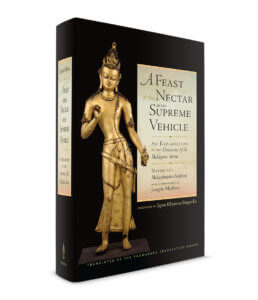
Asaṅga's Ornament of Mahayana Sutras and the Bodhisattvabhumi
Maitreya and Asaṅga’s 4th century Ornament of the Mahayana Sutras, which we published along with Mipham Rinpoche’s commentary as The Feast of the Nectar of the Supreme Vehicle, has over 500 references to the paramitas. It almost goes without saying that this is a treasure trove of resources for understanding the paramitas, how they support bodhichitta, and why they are essential to put into practice.
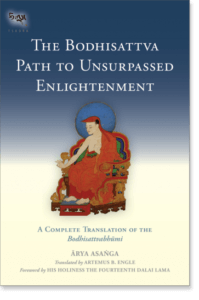
Asanga’s Bodhisattvabhūmi
Asaṅga’s masterpiece, the Bodhisattvabhumi, published as The Bodhisattva Path to Unsurpassed Enlightenment: A Complete Translation of the Bodhisattvabhumi, refers to the power of the perfections and that this power be understood in four different aspects: abandoning the opposing quality, ripening the accumulations of merit and wisdom, benefitting oneself and others, and bestowing results in the future.
Inspired by the Bodhisattva Manjushri, the Profound View of Mahayana was put forth by Nāgārjuna and later became known as the Madhyamaka school of Mahayana Buddhism. Accordingly, the the six perfections are fundamental to the Madhyamaka school which emphasizes the Prajñaparamita Sutras or Sutras of Transcendent Perfection. Of Nāgārjuna's primary works, his Precious Garland and Letter to a Friend centralize around the paramitas as a whole.
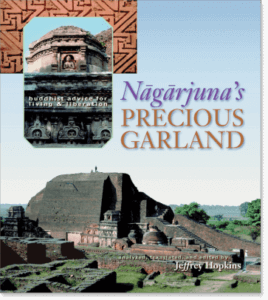
Nāgārjuna's Precious Garland
Nāgārjuna's Precious Garland is a letter that advises a king on how to take advantage of the precious life we have and move towards enlightenment. The paramitas are presented throughout.

Nāgārjuna's Letter to a Friend
Nāgārjuna’s Letter to a Friend, a work of just over 120 verses, is interesting as the commentarial traditions based on this text that came through India and Tibet vary in their emphasis. Sakya Pandita presents it through the lens of the Three Trainings, some in terms of the three kinds of beings. Kangyur Rinpoche, whose commentary forms the bulk of our edition, stresses the six paramitas. The bulk of Nāgārjuna’s work, verses 8-115 of the 123, are on the six paramitas and Kangyur Rinpoche’s commentary reflects this. Numerically, it is the fifth and sixth paramitas that receive the most explanation.

One of the most studied works of the Tibetan tradition, especially the Gelug, is Tsongkhapa’s Lam Rim Chenmo, or The Great Treatise on the Stages to the Path of Enlightenment. Unsurprisingly there is an extensive presentation of the paramitas in the second volume. Drawing extensively on sutras, Nāgārjuna, Asaṅga, and Tsongkhapa.
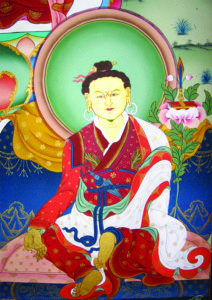
Also of the Lam Rim genre, the 18th century visionary Jigme Lingpa wrote the astonishingly powerful Treasury of Precious Qualities which includes a 60 page section on the paramitas, inclusive of the commentary by Kangyur Rinpoche.
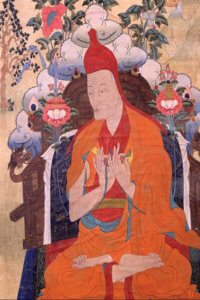
Jamgön Kongtrül, in his 19th century ten-volume masterpiece The Treasury of Knowledge, has, in volume five on ethics, an in-depth treatment of the paramitas.
The guide above, while not comprehensive, will help you build a strong foundation. You can also look at more of our books that explore the paramitas here.
We also have additional videos about the bodhisattva path on shambhala.com.
Finally, Adam Pearcey, the force behind Lotsawa House, has also translated a wonderful short work by Sakya master Rongtön Sheja Künrig on practicing the paramitas: https://www.lotsawahouse.org/tibetan-masters/rongton/six-paramitas

The Essence of Wisdom | An Excerpt from Beyond the Ordinary Mind
To the glorious primordial protector, I pay homage!
There are three stages to sustaining the essence of rigpa: (1) recognition, (2) perfecting the strength, and (3) gaining stability.
At first, refine your understanding until, through the guru’s instructions, you come to see the actual face of rigpa, nakedly and without intellectual speculation. Once you arrive at certainty, it is crucially important that you sustain rigpa’s essence by yourself. Mere recognition is insufficient; you must develop its strength. Moreover, although you might recognize rigpa at first, unless you settle in that recognition, it will soon be interrupted by thoughts, making it difficult to experience naked, unadulterated rigpa. So, at this stage, it is crucial that you settle, without suppressing or indulging thoughts, and rest repeatedly, for periods of increasing duration, in an experience of uncontrived, pure awareness. Once you have familiarized yourself with this again and again, the waves of thought will weaken and the face of rigpa you are sustaining will grow clearer. During meditation, remain in this experience for as long as you can. And in postmeditation, maintain the mindfulness of recalling the face of rigpa.
If you can familiarize yourself with this, the strength of rigpa will increase. Thoughts will continue to arise at first, but, even without your having to resort to any other remedy, they will be freed by themselves in an instant if you simply leave them as they are—just as a snake uncoils its own knots by itself. Then, with increased familiarity, rising thoughts will bring only a slight initial disturbance but will then dissolve immediately by themselves, like writing on water. As you become still more familiar with this state, you will reach a point where rising thoughts no longer have any effect at all, and you will feel neither hopeful nor anxious about their arising or nonarising. This experience of being beyond benefit and harm is likened to a thief entering an empty house.
By continuing to familiarize yourself with this practice, you will eventually reach the level of perfect strength, when thoughts and the ālaya, together with any tendency to produce movement in the mind, all dissolve into unaltered dharmakāya, and awareness is secure in its own place. Just as you might search for ordinary earth and stones on an island of gold, never to find any, at this point the whole of appearance and existence, without exception, arises as a dharmakāya realm, wherein purity is all-encompassing. This is known as gaining stability; it is the stage at which hopes and anxieties about saṃsāra and nirvāṇa or birth and death are eradicated entirely.
Just as, in this way, daytime perceptions and thoughts are gradually brought into rigpa’s domain, during the nighttime too there is no need to rely on any other instruction, as this can be applied to dreams and the recognition of the clear light during both light and heavy sleep. Having understood this, persist in the practice until you gain stability, with unflagging diligence like the continuous flow of a river.
This instruction was given by Mipham. May virtue and goodness abound!
